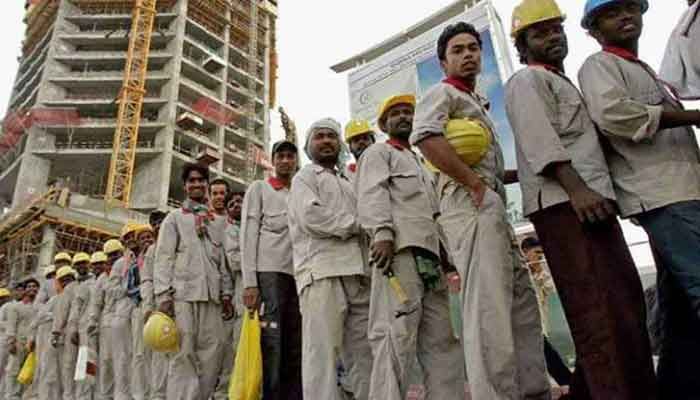
Desk Report
Publish: 15 Dec 2020, 11:44 am
Migrants earn nearly 13 per cent less than national workers, an ILO study shows

The gap between wages paid to migrants and national workers is wide and wide, and may widen further as a result of the pandemic, the report said.
Monday's report, "Migrant pay gap: understanding wage differences between migrants and nationals," examined 49 countries that host half of the world's migrant workers and found that migrants earn about 13 percent less on average, reports UNB.
“What our report shows is that even before COVID-19 migrant workers suffered significant inequality and treatment in terms of wages. And we know that the wage gap not only has widened in the past few years, but migrants continue to be the subject of discrimination during this pandemic”, said Michelle Leighton, chief of ILO’s Labour Migration Branch.

In some countries, such as Cyprus, Italy and Austria, the pay difference in hourly wages is higher, at 42%, 30% and 25% respectively. It is lower than the average in Finland, 11 per cent and almost 9 per cent in the European Union as a whole.
Women suffer double discrimination
In some cases, the difference could be explained by objective factors such as schooling, expertise and experience, but otherwise discrimination was the key explanation why migrants received less, she said at a press conference to present the results of the study.
“Therefore tackling discrimination and prejudices that are deeply entrenched in the workplace and our society is more important than ever. And addressing the migrant pay gap is not only a matter of social justice, but it's also important to reduce inequalities between women and men to reduce income inequalities between households”, Ms. Leighton said.
Women migrants mostly work in domestic or caring positions, faced with a double dose of wage discrimination, as they earn less than nationals and on average less than male migrants.
The wage difference was largest in Cyprus, 42% in Italy, 30% in Austria and 25% in Austria. For the European Union as a whole, it was below the global average of less than 9%.
In high-income countries, migrants were mostly in precarious jobs, with 27 per cent on temporary contracts and 15 per cent on part-time work, and preferred to work in agriculture, fishing, forestry, mining, quarrying, manufacturing, energy and water utilities or construction.
But in poorer countries, where migrants tended to be skilled workers from richer countries who were sent on temporary work assignments, the pay gap was inverted, with migrants earning about 17.3 per cent more per hour than locals.
Pandemic impact
The ILO team examined the effect of the pandemic on refugees in two countries: the United States and Mexico. Both countries experienced an initial rise in unemployment. When the boom subsided, many migrants in the United States were replaced by informal workers and remained unemployed, while migrant workers in Mexico found new but lower-wage employment.
Earlier this month ILO Director-General Guy Ryder predicted that the world was facing a long and hard road back from the pandemic, which had struck the world of work “an extraordinary blow” almost overnight.
ILO wage specialist Rosalia Vasquez-Alvarez said women were more likely to work in sectors that were hardest hit by the pandemic, such as trade, manufacturing, private health and the gig economy. High income economies were expected to suffer a huge wage depression in the next few months, she said.
“Overall, we expect a depression in wages that may actually have a bigger impact among migrant workers”, Vasquez-Alvarez said.
Subscribe Shampratik Deshkal Youtube Channel
Topic : ILO world's migrant workers
© 2024 Shampratik Deshkal All Rights Reserved. Design & Developed By Root Soft Bangladesh